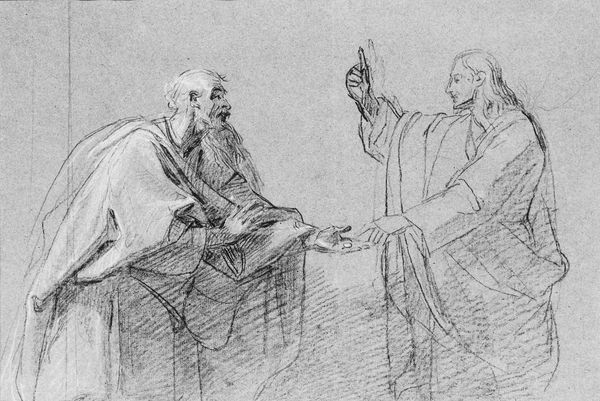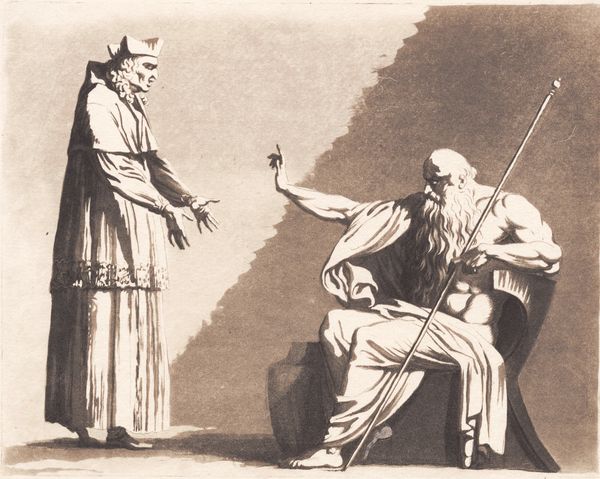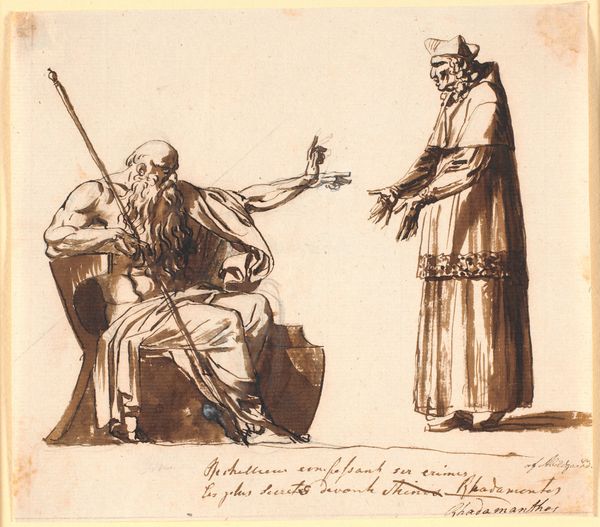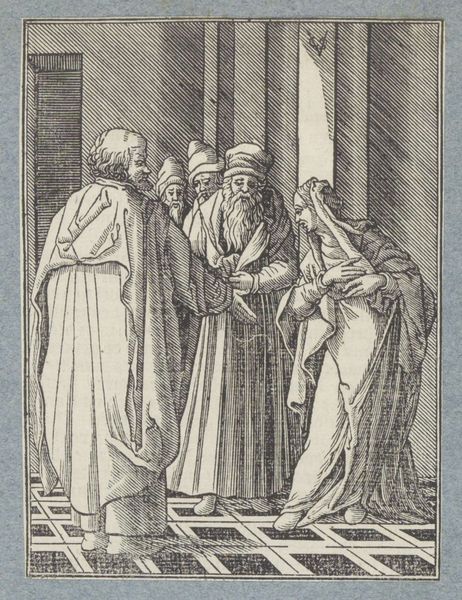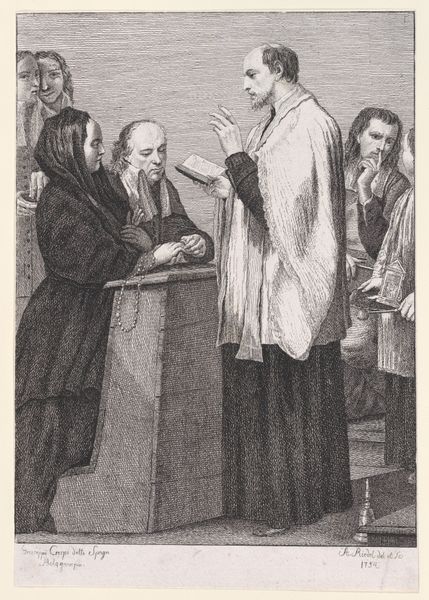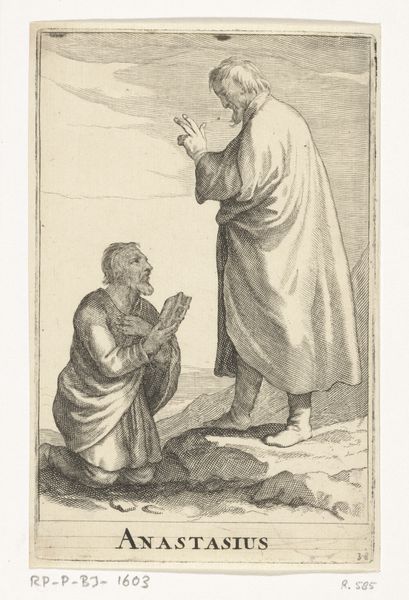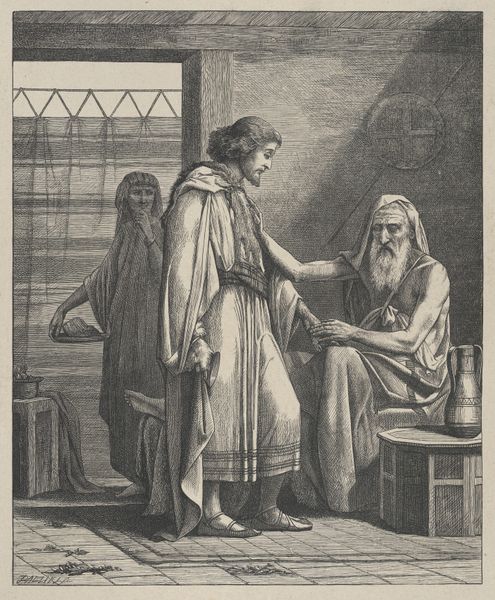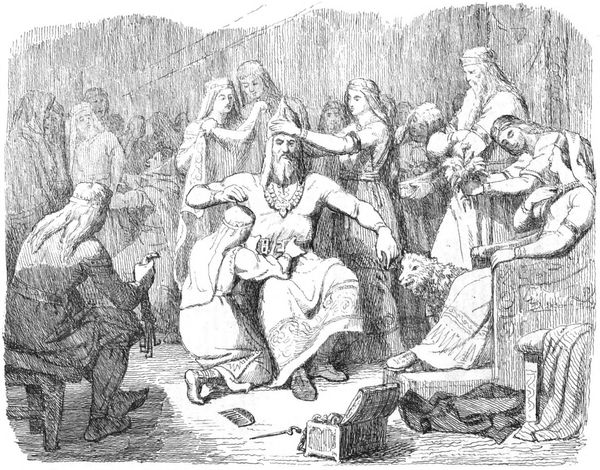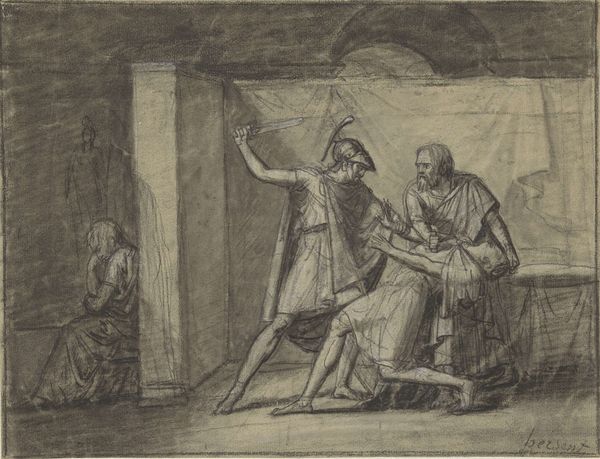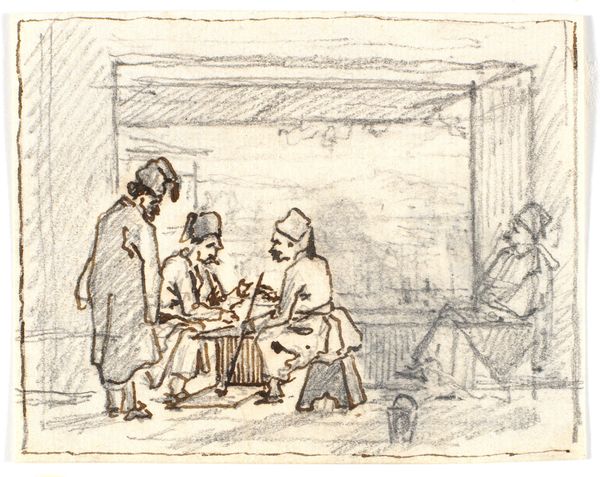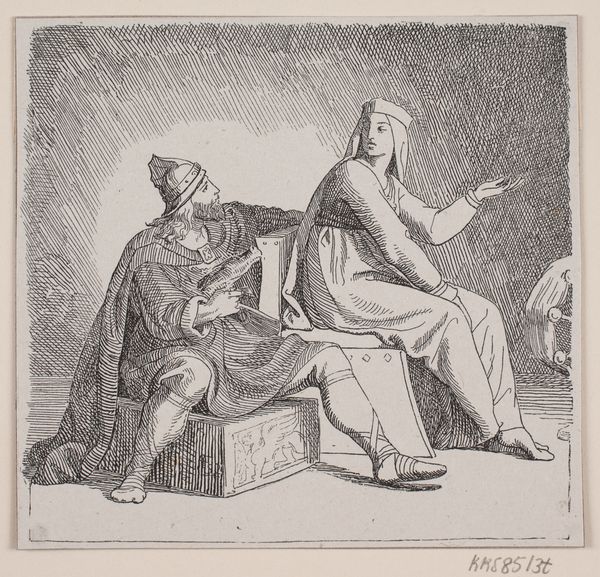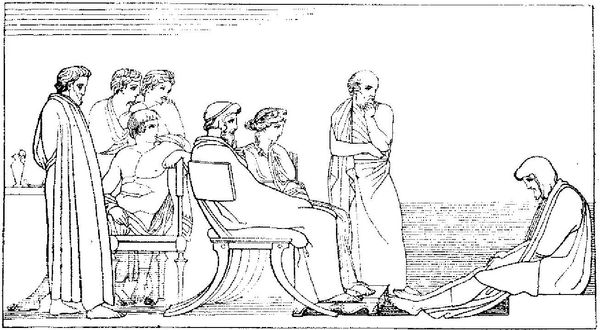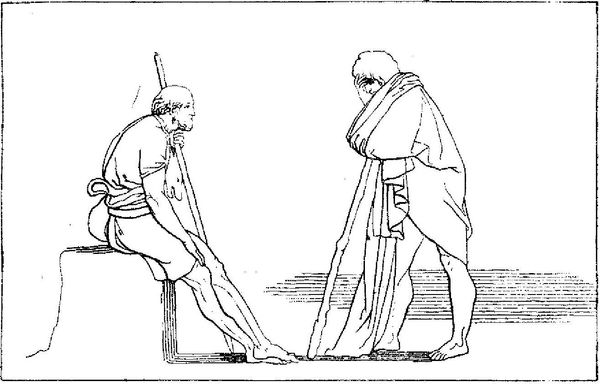
drawing, pencil
#
portrait
#
drawing
#
neoclacissism
#
pencil sketch
#
pencil
#
christianity
#
history-painting
#
academic-art
#
christ
Dimensions: 50.2 x 31 cm
Copyright: Public domain
Curator: This pencil sketch by John Singleton Copley, created in 1782, is a study for his painting, "The Tribute Money." Editor: The figures, rendered in gray pencil strokes, appear to be in mid-conversation. It evokes a sense of drama despite its modest form. Curator: Copley, a master of both American and British painting, illustrates a scene where Christ is challenged about the legitimacy of paying taxes to Caesar. It is interesting to see the use of academic art as he adopts Neoclassical elements to translate themes of Christianity, isn't it? Editor: It is quite the dramatic scene, one that historically has fueled all kinds of ideological debates. Christ’s response has been used both to demand resistance and submission to authority. Note the body language: a seated older man leans, seemingly perplexed, while Christ raises a single finger. Is Copley encouraging the viewers to resist royal authority, too? He had fled Boston due to revolutionary sentiments before this, so maybe his personal opinions influenced his art choices, as they so often do! Curator: Copley often embedded narratives within his paintings and used subtle gestures to signal various psychological or emotional undercurrents at play. But looking deeper, consider the archetypes. Copley presents two familiar but polarized figures: old and young, established and radical, earthly and divine. It serves as an almost elemental confrontation. Editor: I think your reading of the archetypes makes me look at the symbolism from a different angle: Could we read these figures not as opposites, but as representative of different aspects of humanity—its doubts, and its aspiration? And what are we to do with those ideas when looking at how we build societies? The drawing is powerful in its understatement of political dynamics even now. Curator: Ultimately, the beauty of sketches lies in their ability to reveal an artist’s raw vision, especially in such symbolic works, capturing essential truths about belief, power, and human relationships. Editor: Yes, Copley manages to capture an intersectional dialogue between political realities, theological questions, and fundamental interpersonal dynamics using only the strokes of a pencil. And even within these seemingly limited resources he's managed to inspire us to do the same!
Comments
No comments
Be the first to comment and join the conversation on the ultimate creative platform.
